 W
WThe 1st Cornwall Artillery Volunteers were formed in 1860 as a response to a French invasion threat. They served as a Coast Artillery unit during both World Wars, and also manned batteries serving overseas. The unit continued in existence until the dissolution of Coast Artillery in the UK in 1956.
 W
WThe 1st Essex Artillery Volunteers were formed in 1860 as a response to a French invasion threat. They became part of the Territorial Force in 1908 and served during the First and Second World Wars until amalgamated in 1956.
 W
WThe 5th Armored Division ("Victory") was an armored formation of the United States Army active from 1941 to 1945 and from 1950 to 1956.
 W
WThe 6th Armored Division was an armored division of the United States Army during World War II. It was formed with a cadre from the 2nd Armored Division.
 W
WThe 8th Armoured Brigade was an armoured brigade of the British Army formed in August 1941, during the Second World War and active until 1956. The brigade was formed by the renaming of 6th Cavalry Brigade, when the 1st Cavalry Division based in Palestine converted from a motorised formation to an armoured unit, becoming 10th Armoured Division.
 W
WThe 11th Armoured Division was an armoured division of the British Army which was created in March 1941 during the Second World War. The division was formed in response to the unanticipated success of the German panzer divisions. The 11th Armoured was responsible for several major victories in the Battle of Normandy from in the summer of 1944, shortly after the D-Day landings of 6 June 1944, and it participated in the rapid advance across France, Belgium, and the Netherlands and, later, the Rhine crossing in March 1945, and later invaded Germany. It was disbanded in January 1946 and reformed towards the end of 1950. In 1956, it was converted into the 4th Infantry Division.
 W
WThe 13th (Lancashire) Parachute Battalion was an airborne infantry battalion of the Parachute Regiment, raised by the British Army during the Second World War. The battalion was formed in May 1943 by the conversion of the 2/4th Battalion, South Lancashire Regiment to parachute duties and was assigned to the 5th Parachute Brigade in the 6th Airborne Division.
 W
WThe 13th Frontier Force Rifles was part of the British Indian Army, and after 1947, Pakistan Army. It was formed in 1922 by amalgamation of five existing regiments and consisted of five regular battalions.
 W
WThe 14th Punjab Regiment was a regiment of the British Indian Army from 1922 to 1947. It was transferred to the Pakistan Army on independence in 1947, and amalgamated with the 1st, 15th and 16th Punjab Regiments in 1956, to form the Punjab Regiment.
 W
WThe 16th Airborne Division was an airborne infantry division of the British Territorial Army. It was first commanded by Major-General Roy Urquhart, and had its divisional headquarters in London.
 W
WThe Middlesex Yeomanry was a volunteer cavalry regiment of the British Army originally raised in 1797. It saw mounted and dismounted action in the Second Boer War and in World War I at Gallipoli, Salonika and in Palestine, where one of its officers won a Victoria Cross at the Battle of Buqqar Ridge and the regiment rode into Damascus with 'Lawrence of Arabia'. Between the world wars the regiment was converted to the signals role and it provided communications for armoured formations in World War II, including service in minor operations in Iraq, Palestine, Syria and Iran, as well as the Western Desert, Italian and North-West European campaigns. It continued in the postwar Territorial Army and its lineage is maintained today by 31 Signal Squadron, Royal Corps of Signals, which forms part of the Army Reserve.
 W
WThe 33rd Infantry Regiment was an American unit stationed in the Panama Canal Zone and Caribbean from 1916-56. Though providing troops for various other American military formations, the regiment had no battle honors of its own.
 W
WThe 40th Royal Tank Regiment was an armoured regiment of the British Army from 1938 until 1956. It was part of the Royal Tank Regiment, itself part of the Royal Armoured Corps.
 W
WThe 42nd Royal Tank Regiment was an armoured regiment of the British Army from 1938 until 1956. It was part of the Royal Tank Regiment, itself part of the Royal Armoured Corps.
 W
WThe 56th (London) Infantry Division was a Territorial Army infantry division of the British Army, which served under several different titles and designations. The division served in the trenches of the Western Front during the First World War. Demobilised after the war, the division was reformed in 1920 and saw active service again in the Second World War in Tunisia and Italy. The division was again disbanded in 1946 and reformed first as an armoured formation and then as an infantry division before final disbandment in 1961.
 W
WThe City of London Signals was a Territorial Army unit of the British Army's Royal Corps of Signals. It had its origins in a signal company of the Royal Engineers formed in 1908 and during World War II it provided the divisional signals for the 56th (London) Division and its duplicates as well as communications for the Royal Air Force in the Middle East. Its successors continued in the postwar Territorial Army and Army Reserve until 2016.
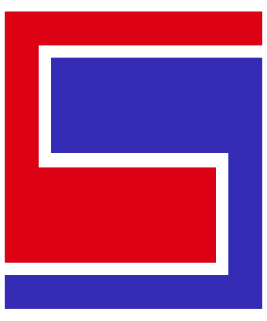 W
WThe 69th Infantry Division, nicknamed the "fighting 69th," was a Division of the United States Army formed during World War II. It is distinct from the 69th Infantry Regiment.
 W
WThe 71st Infantry Division was a unit of the United States Army in World War II.
 W
WThe 99th Guards Rifle Division was a Red Army division of World War II. It was formed from the 14th Guards Airborne Division in January 1944. It fought in the Svir-Petrozavodsk Offensive between June and August 1944. It became the 99th Guards Airborne Division in August but was converted into infantry again in December 1944 and January 1945. The division fought in the Budapest Offensive and in the defense against Operation Spring Awakening. At the end of the war it participated in the Vienna Offensive and the Prague Offensive. In August 1945 it transferred to the Far East and was converted into an airborne division in 1946. The division served in the Far East for the next decade and was disbanded in 1956.
 W
WThe 6th County of London Brigade, Royal Field Artillery, was a new unit formed when Britain's Territorial Force was created in 1908. Its origin lay in Artillery Volunteer Corps formed in the Surrey suburbs of South London in the 1860s, which had later been incorporated into a larger London unit. Together with its wartime duplicate it served on the Western Front, at Salonika and in Palestine during World War I. Converted to the anti-tank role just before World War II it saw widely varied service during the war, while its duplicate regiment landed on D-Day. The regiment continued in the postwar Territorial Army until 1961.
 W
WThe Metropolitan Artillery Volunteers was a part-time unit of the British Volunteer Force formed in the London area in 1861. It was designated the 3rd Middlesex Artillery Volunteers and went on to become the 5th London Brigade, Royal Field Artillery in the Territorial Force. It provided two active service units in World War I, which saw action on the Western Front. Just before World War II it again spun off a duplicate regiment, each taking the '5th London' subtitle. Both regiments saw widely varied service during the war. The regiment later provided an airborne artillery unit in the Territorial Army of the 1950s.
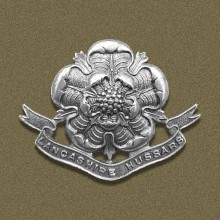 W
WThe Lancashire Hussars was a British Army unit originally formed in 1798. It saw action in the Second Boer War, the First World War and the Second World War. In 1969, the regiment reduced to a cadre and the Yeomanry lineage discontinued.
 W
WThe 4th Lancashire Artillery Volunteers, later renamed to the 4th West Lancashire Brigade, known as 'The Old 4th', was a part-time unit of the British Army's Royal Artillery founded in Liverpool in 1859. It served on the Western Front during World War I, one of its members winning the Victoria Cross at Cambrai. Between the world wars the unit pioneered mechanical traction methods. During World War II it formed three regiments that saw action at Dunkirk, in East Africa, on Crete, at Tobruk, in Burma, and in the final campaigns in Italy and North West Europe. It continued in the post-war Territorial Army until 1973.
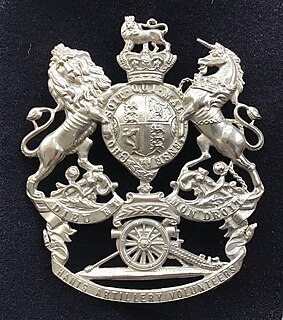 W
WThe 1st Hampshire Artillery Volunteers and its successors were part-time coast defence units of the British Army from 1860 to 1967. Although the units saw no action, they protected the Portsmouth area in both World Wars and supplied trained gunners to siege batteries engaged on the Western Front during World War I. The unit continued in the Territorial Army after World War II.
 W
WThe 2nd Devonshire Artillery Volunteers was a unit of the British Volunteer Force and Territorial Army. The unit and its successors defended Plymouth Dockyard and the Devon coast from 1861 to 1961.
 W
WThe Pembroke Royal Garrison Artillery was a part-time unit of the British Army that defended the coast of West Wales during both world wars. Although it never saw action in its coastal defence role, it manned a number of siege batteries of heavy howitzers for service on the Western Front and Italian Front in World War I.
 W
WThe 1st Cornwall Artillery Volunteers were formed in 1860 as a response to a French invasion threat. They served as a Coast Artillery unit during both World Wars, and also manned batteries serving overseas. The unit continued in existence until the dissolution of Coast Artillery in the UK in 1956.
 W
WThe Forth Royal Garrison Artillery and its successors were Scottish part-time coast defence units of the British Army from 1908 to 1956. Although they saw no active service, they supplied trained gunners to siege batteries engaged on the Western Front during World War I.
 W
WThe Forth Royal Garrison Artillery and its successors were Scottish part-time coast defence units of the British Army from 1908 to 1956. Although they saw no active service, they supplied trained gunners to siege batteries engaged on the Western Front during World War I.
 W
WThe Clyde Royal Garrison Artillery and its successors were Scottish part-time coast defence units of the British Army from 1910 to 1967. Although they unit saw no active service, they supplied trained gunners to siege batteries engaged on the Western Front during World War I.
 W
WThe 1st Dorsetshire Artillery Volunteers and its successors were part-time coast defence units of the British Army from 1859 to 1956. Although these units saw no action, they protected the Dorset Coast, including the naval base of Portland Harbour, in both World Wars and also supplied trained gunners to siege batteries engaged on the Western Front during World War I. The unit continued in the Territorial Army after World War II.
 W
WThe East Riding Royal Garrison Artillery (ERRGA) was a part-time unit of Britain's Royal Artillery based at Hull in the East Riding of Yorkshire. It provided coastal defence artillery along the Humber Estuary from 1908 to 1956, manned siege batteries on the Western Front during World War I at the Somme and Ypres and played a role in the pursuit of the German army during the Hundred Days Offensive. It served as infantry in Allied-occupied Germany after World War II. Its successor units in the Territorial Army included anti-aircraft artillery and field engineers.
 W
WThe 1st Orkney Artillery Volunteers were formed in 1860 as a response to a French invasion threat. They served as a Coast Artillery unit and continued in existence until the dissolution of Coast Artillery in the UK in 1956.
 W
WThe 6th Battalion, Royal Welch Fusiliers, was a Welsh unit of the British Army's auxiliary forces. Formed in 1908, from Volunteer units that dated back to 1860, it fought at Gallipoli), in Egypt and Palestine during World War I, and in the campaign in North West Europe during World War II. Postwar it was converted to the anti-aircraft artillery role, then reverted to infantry in 1956 after it amalgamated with a neighbouring unit.
 W
WThe 581st Air Resupply and Communications Wing was a United States Air Force special operations wing, last assigned to Thirteenth Air Force at Clark Air Base, Philippines, from 1951-53.
 W
WThe Cambridgeshire Regiment was an infantry regiment of the British Army, and was part of the Territorial Army. Originating in units of rifle volunteers formed in 1860, the regiment served in the Second Anglo-Boer War and the First and Second World Wars before losing its separate identity in 1961. Its lineage is continued today by the Royal Anglian Regiment.
 W
WThe Cornwall Fortress Royal Engineers, was a volunteer unit of Britain's Royal Engineers formed in 1908. It helped to defend the coastal towns of Cornwall and sent engineer units to work on the Western Front. Converted to an air defence role before World War I, it served as an searchlight unit during the Battle of Britain, the Blitz, then, as a light anti-aircraft gun unit, it served in the most heavily attacked part of the South Coast of England throughout 1942–44, including the V-1 flying bomb campaign.
 W
WThe Carmarthenshire Fortress Royal Engineers (CFRE) was a coast defence unit of Britain's Territorial Army formed after World War I. In World War II, it provided an anti-aircraft searchlight unit that served during the early part of The Blitz, and then during the Siege of Malta.
 W
WThe 11th Special Operations Intelligence Squadron is an intelligence unit of the United States Air Force. It provides tailored full-motion video processing, exploitation and dissemination for special operations forces engaged in both combat and non-combat operations worldwide.
 W
WThe Arab Legion was the regular army of Transjordan and then Jordan in the early part of the 20th century.
 W
WThe Black Guard (Arabic: عبيد البوخاري "Slaves of al-Būkhārī"; also known as ‘Abīd al-Dīwān "slaves of the divan", Jaysh al-‘Abīd "the slave army", and ‘Abid al-Sultan "the sultan’s slaves" were the corps of black-African slaves and Haratin slave-soldiers assembled by the Alaouite sultan of Morocco, Isma‘il ibn Sharif. They were called the "Slaves of Bukhari" because Sultan Isma‘il emphasized the importance of the teachings of the famous imam Muhammad al-Bukhari, going so far as to give the leaders of the army copies of his book. The ‘Abid al-Bukhari represent a Moroccan example of the Islamic slave army, examples of which abound in the history of the Islamic world, including the Mamluk Sultanate of Cairo and the janissaries of the Ottoman Empire.
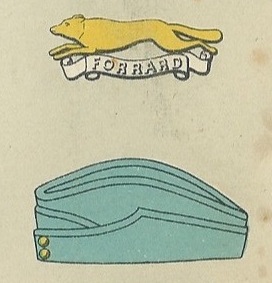 W
WThe East Riding of Yorkshire Yeomanry was a unit of the British Army formed in 1902. Units of Yeomanry Cavalry were raised in the East Riding of Yorkshire in the 18th and early 19th centuries at times of national emergency: the Jacobite Rising of 1745, the French Revolutionary Wars and the Napoleonic Wars. These were stood down once each emergency was over. The East Riding of Yorkshire Yeomanry, was established in 1902, and this saw action during the First World War both in the mounted role and as machine gunners.
 W
WThe Fife and Forfar Yeomanry (FFY) was an Armoured Yeomanry Regiment of the British Army formed in 1793. It saw action in the Second Boer War, the First World War and the Second World War. It amalgamated with the Scottish Horse to form the Fife and Forfar Yeomanry/Scottish Horse in 1956. The lineage is maintained by "C" Fife and Forfar Yeomanry/Scottish Horse Squadron of The Scottish and North Irish Yeomanry based in Cupar in Fife.
 W
WThe Guardia Mora, officially the Guardia de Su Excelencia el Generalísimo was Francisco Franco's personnel ceremonial escort. it was formed in February 1937 from personnel drawn from the Guardia Civil in Tétouan and the II Tabor of Grupo de Regulares de Tetuan No.1. Their white and red hooded cloak, based on the chilaba, was worn over the white parade uniform of Regulares officers.
 W
WThe Korean Communications Zone, abbreviated to KComZ or KCOMZ, was a United States military formation created during the Korean War with overall responsibility for the communications zone including communications, supply, and administration behind the front line, including relations with the South Korean government and the care of civilian refugees and prisoners of war.
 W
WThe Lanarkshire Yeomanry was a yeomanry regiment of the British Army, first raised in 1819, which served as a dismounted infantry regiment in the First World War and provided two field artillery regiments in the Second World War, before being amalgamated into The Queen's Own Lowland Yeomanry in 1956. Its lineage was revived by B Squadron, the Scottish Yeomanry in 1992 until that unit was disbanded in 1999.
 W
WThe Lothians and Border Horse was a Yeomanry regiment, part of the British Territorial Army. It was ranked 36th in the Yeomanry order of precedence and was based in the Scottish Lowland area, recruiting in the Lothians – East Lothian (Haddingtonshire), Midlothian (Edinburghshire), and West Lothian (Linlithgowshire) – and along the border with England, particularly Berwickshire. It amalgamated with the Lanarkshire Yeomanry and the Queen's Own Royal Glasgow Yeomanry to form the Queen's Own Lowland Yeomanry in 1956.
 W
WThe North America and West Indies Station was a formation or command of the United Kingdom's Royal Navy stationed in North American waters from 1745 to 1956. The North American Station was separate from the Jamaica Station until 1830 when the two combined to form the North America and West Indies Station. It was briefly abolished in 1907 before being restored in 1915. It was renamed the America and West Indies Station in 1926. It was commanded by the Commander-in-Chief, North America and West Indies Station and subsequently by the Commander-in-Chief, America and West Indies Station.
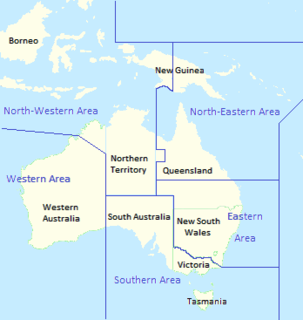 W
WNorth-Eastern Area Command was one of several geographically based commands raised by the Royal Australian Air Force (RAAF) during World War II. For most of its existence it controlled units based in central and northern Queensland as well as Papua New Guinea. It was formed in January 1942 from the eastern part of the former Northern Area Command, which had covered all of northern Australia and Papua. Headquartered at Townsville, Queensland, North-Eastern Area Command's responsibilities included air defence, aerial reconnaissance and protection of the sea lanes within its territory. Its flying units, equipped with fighters, reconnaissance bombers, dive bombers and transports, took part in the battles of Rabaul, Port Moresby and Milne Bay in 1942, and the landings at Hollandia and Aitape in 1944.
 W
WThe Queen's Own Yorkshire Dragoons was a yeomanry regiment of the British Army in existence from 1794 to 1956. It was formed as a volunteer cavalry force in 1794 during the French Revolutionary Wars. Its volunteer companies played an active role with the Imperial Yeomanry in the Second Boer War, but opportunities for mounted action were much more restricted during World War I and it was temporarily converted into a cycle unit. It remained a cavalry regiment throughout the interwar years, and was the last horsed unit of the British Army to see action, in the Syria–Lebanon Campaign of 1941, finally mechanising the following year. It served as motorised infantry in the North African and Italian campaigns of World War II. In 1956, it merged with the Yorkshire Hussars and the East Riding of Yorkshire Yeomanry to form the Queen's Own Yorkshire Yeomanry. Its lineage is continued today by A Squadron, the Queen's Own Yeomanry.
 W
WTransport Flight (Japan) was a Royal Australian Air Force (RAAF) transport unit that operated in the aftermath of the Korean War. It was formed in March 1955 at Iwakuni, Japan, and equipped with three Douglas C-47 Dakotas and a CAC Wirraway. The flight's main duty was flying a regular courier service between Japan and South Korea in support of Commonwealth military units based on the peninsula. Transport Flight (Japan) ceased operations in June 1956 and disbanded in September that year.
 W
WThe Rhodesian Armoured Corps—the "Black Devils"—was the only standing armoured battalion of the Rhodesian Security Forces. During World War II, it took part in the Allied Spring 1945 offensive and the Battle of Monte Cassino as part of South Africa's 6th Armoured Division. The unit was among the first to enter a liberated Florence in July 1944. Prior to 1963, its crews were trained in the United Kingdom or Aden Colony and were known as the "Selous Scouts" under the Federation of Rhodesia and Nyasaland. After Rhodesia's Unilateral Declaration of Independence, maintaining the armoured vehicle fleet became a responsibility of the Rhodesian Light Infantry until Major Bruce Rooken-Smith reactivated the former Rhodesian Armoured Car Regiment in 1972. During the Rhodesian Bush War, the regiment fought in several major campaigns and battles, particularly Operation Miracle in September 1979. It was superseded by the new Zimbabwe Armoured Corps between 1980 and 1981.
 W
WThe 1st Royal New South Wales Lancers was an Australian Army light cavalry (reconnaissance) regiment. Its complicated lineage includes the New South Wales Lancers which were first formed as a colonial unit in 1885 as the New South Wales Cavalry, and subsequently saw action in the Second Boer War, and later during First World War at Gallipoli and Palestine as the 1st Light Horse Regiment. The unit subsequently served during the Second World War as the 1st Armoured Regiment equipped with Matilda tanks, fighting the Japanese in New Guinea and Borneo.
 W
WThe Scottish Horse was a Yeomanry regiment of the British Army's Territorial Army raised in 1900 for service in the Second Boer War. It saw heavy fighting in both the First World War, as the 13th Battalion, Black Watch, and in the Second World War, as part of the Royal Artillery. It amalgamated with the Fife and Forfar Yeomanry to form the Fife and Forfar Yeomanry/Scottish Horse in 1956. The lineage is maintained by "C" Fife and Forfar Yeomanry/Scottish Horse Squadron of The Scottish and North Irish Yeomanry based in Cupar in Fife.
 W
WThe 4th Tunisian Tirailleurs Regiment was an infantry regiment of the Army of Africa, part of the French Army.
 W
WWestern Area Command was one of several geographically based commands raised by the Royal Australian Air Force (RAAF) during World War II. It was formed in January 1941, and controlled RAAF units located in Western Australia. Headquartered in Perth, Western Area Command was responsible for air defence, aerial reconnaissance and protection of the sea lanes within its boundaries. Its aircraft conducted anti-submarine operations throughout the war, and attacked targets in the Dutch East Indies during the Borneo campaign in 1945.
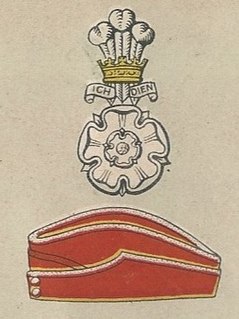 W
WThe Yorkshire Hussars was an auxiliary unit of the British Army formed in 1794. The regiment was formed as volunteer cavalry (Yeomanry) in 1794 during the French Revolutionary Wars and served in the Second Boer War and World War I. It was converted to an armoured role during World War II. In 1956, it merged with two other Yorkshire yeomanry regiments to form the Queen's Own Yorkshire Yeomanry. Its lineage is continued today by the Queen's Own Yeomanry.